Embarking on a China Silk Road tour is not just a journey across diverse landscapes; it’s a voyage through time, culture, and history. The Silk Road, an ancient network of trade routes, has for centuries been a symbol of connectivity and exchange between the East and West. Its paths, stretching over thousands of miles, not only facilitated the trade of precious commodities like silk but also fostered the exchange of ideas, religions, and cultural practices, shaping the course of history.
The allure of the Silk Road lies not only in its historical significance but also in the stories and legends that it has inspired. The journey of Marco Polo, one of the most famous travelers along the Silk Road, is a testament to the route’s importance in global exploration and cultural exchange. His accounts opened the eyes of Europe to the wonders of the East, igniting curiosity and fascination that endure to this day.
As you traverse this legendary route, you’ll encounter an astonishing variety of landscapes – from the rugged mountains and tranquil lakes of China’s vast hinterlands to the sprawling deserts that have witnessed caravans and adventurers over millennia. Each region along the Silk Road offers a unique glimpse into the lives of the people who have thrived in these often harsh environments, their cultures a vibrant tapestry woven through time.
The Silk Road is not just a journey through physical spaces, but a passage through the annals of time, offering a window into the lives and stories of those who came before us. This tour promises an educational and inspiring experience, filled with moments of awe at the natural beauty, historical insights, and cultural richness that define this ancient route. So, buckle up for an adventure that goes beyond mere travel – a true exploration of the heart of civilizations, ancient and modern, that have shaped our world.
The Historical Significance of the Silk Road
The Silk Road, a term coined in the 19th century, represents one of history’s most important trading networks, weaving a tapestry of cultural and economic exchange that stretched from China to the Mediterranean. Its historical significance cannot be overstated, as it was a major artery for the flow of goods, knowledge, and cultural influences across continents.
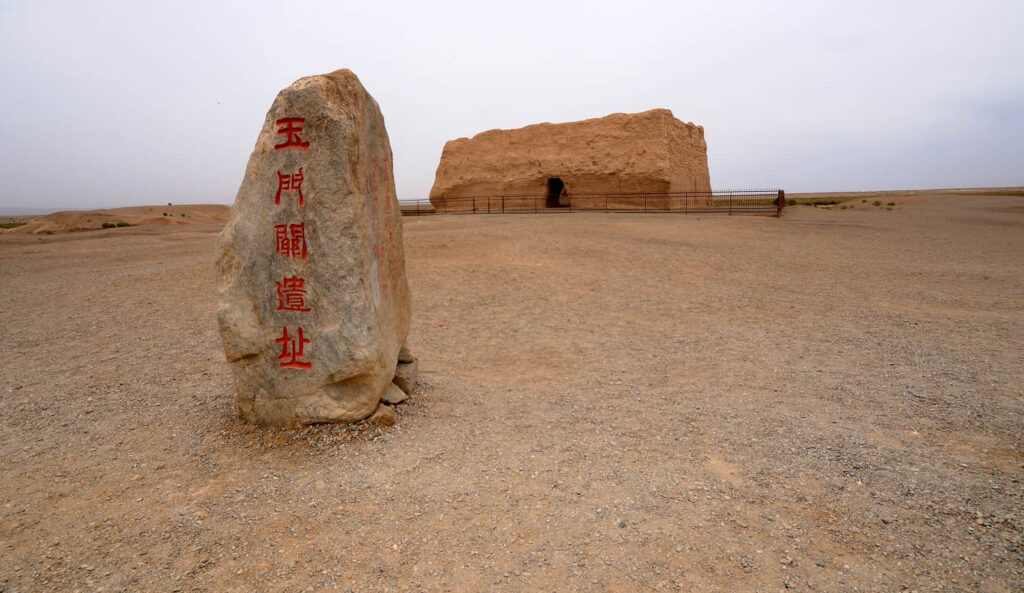
In ancient times, the Silk Road was not a single route but a network of interconnected trade paths, with the silk trade playing a pivotal role. Chinese silk, revered for its quality and beauty, found its way into the markets of Rome, while China, in return, received gold, silver, and other exotic goods. This exchange went beyond mere trade; it was a conduit for the spread of ideas, religions, and technological innovations. Buddhism, for instance, traveled from India to China along these routes, profoundly influencing Chinese culture and spirituality.
During the Han Dynasty (206 BCE – 220 CE), the Silk Road reached its first peak in usage. The Chinese explorer Zhang Qian is credited with its expansion westward, opening China to Central Asia. This period saw the flourishing of trade and cultural exchanges, with caravans carrying not just silk but also spices, precious stones, and art. The subsequent Tang Dynasty (618-907 CE) witnessed the Silk Road at its zenith. Chang’an (modern-day Xi’an), the Tang capital, became a cosmopolitan hub, a melting pot of diverse cultures, religions, and languages.
The Silk Road’s impact extended beyond commerce and culture; it played a significant role in shaping the geopolitical landscape of Eurasia. Empires rose and fell, vying for control of these lucrative trade routes, which were as much about power and influence as they were about commerce.
Today, the remnants of the Silk Road stand as a testament to this remarkable period in world history. From the labyrinthine bazaars of Central Asia to the silent grandeur of ancient ruins in the deserts, the Silk Road tells a story of human endeavor, resilience, and the unquenchable thirst for knowledge and connection. As travelers explore this historic route, they walk in the footsteps of merchants, monks, soldiers, and explorers who, centuries ago, weaved the fabric of our interconnected world.
Major Destinations and Attractions
The Silk Road, stretching across China, is dotted with destinations that are not only visually stunning but also steeped in rich history and culture. Each stop along this ancient route offers a unique window into the past, making it a must-visit for any avid traveler or history enthusiast.
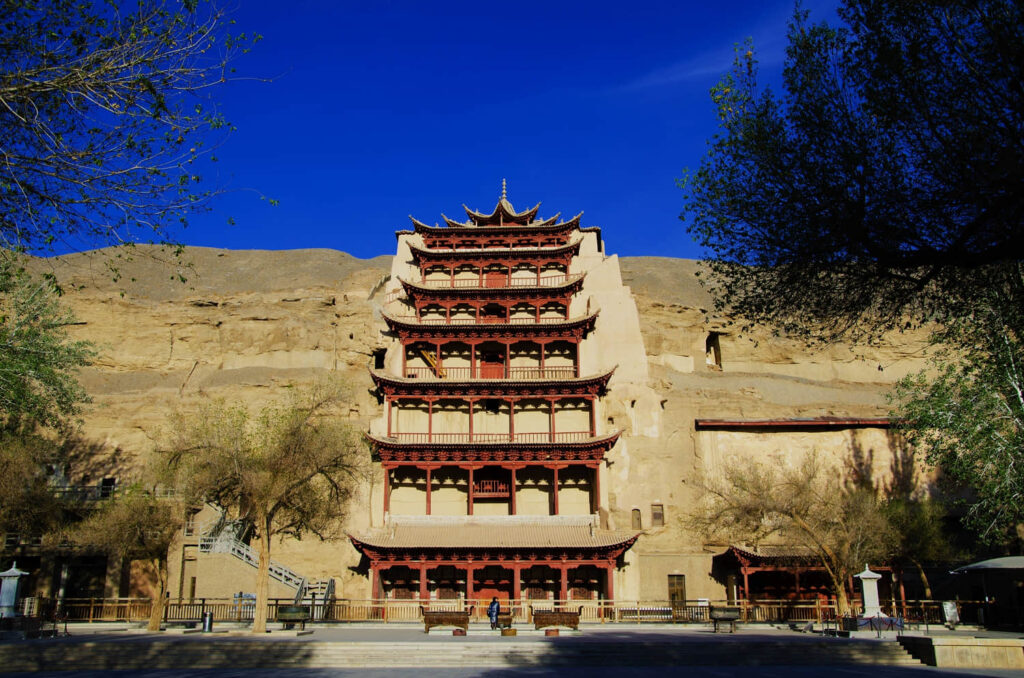
Gansu Province: This region serves as a gateway to the Silk Road in China. Key attractions include the Hexi Corridor, a crucial pathway for Silk Road travelers, and the Jiayuguan Pass, the last fortress of the Great Wall of China, marking the edge of the Chinese empire. Nearby, the Crescent Lake, an oasis in the desert, offers a stark yet beautiful contrast to the surrounding dunes.
Shaanxi Province: Home to the world-famous Terracotta Warriors in Xi’an, Shaanxi is a treasure trove of history. The ancient city of Xi’an, once known as Chang’an, was the eastern terminus of the Silk Road and a melting pot of cultures and religions during the Tang Dynasty.
Qinghai Province: Known for its stunning natural beauty, Qinghai is highlighted by the mesmerizing Qinghai Lake, the largest lake in China. The province is also a center of Tibetan Buddhist culture, offering a different perspective on the religious diversity along the Silk Road.
Xinjiang Province: This vast and diverse area is where the Silk Road splits into northern and southern routes. Highlights include the Tarim Basin, home to ancient mummy discoveries; the bustling market city of Urumqi; and the striking natural landscapes of the Gobi Desert. The Karakoram Highway and Pamir Highway offer breathtaking views and a challenging yet rewarding journey for the adventurous traveler.
Historical Sites: Notable sites in this region include the Zhangye Danxia Landform, known for its colorful rock formations, and the Mogao Caves, also known as the Thousand Buddha Grottoes, which house an incredible collection of Buddhist art.
Each of these destinations along the Silk Road in China offers a unique blend of natural beauty, historical significance, and cultural richness. They stand as living museums, showcasing the legacy of a route that was instrumental in shaping not only the history of China but the wider world. As you journey through these lands, you’re not just a tourist, but a traveler in time, experiencing the echoes of a bygone era that continues to resonate in the modern world.
Experiencing Silk Road Culture
The Silk Road, more than a historical trade route, is a cultural mosaic, embodying a blend of diverse traditions, religions, and lifestyles. As travelers journey along this ancient path, they immerse themselves in a cultural experience that is as rich as it is varied.
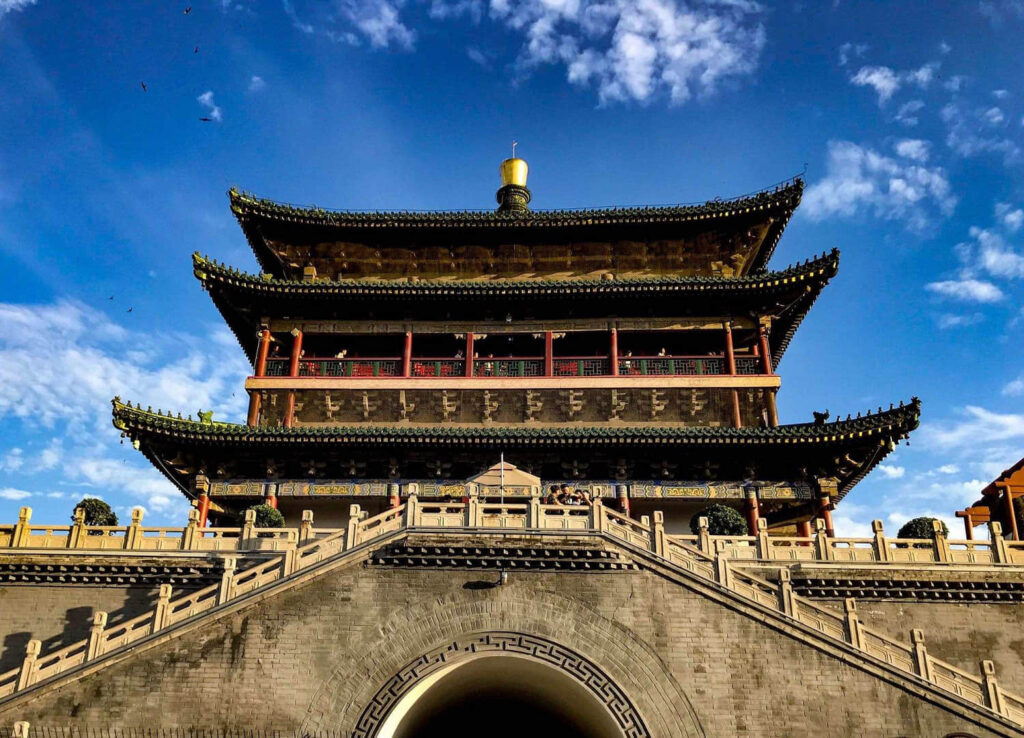
In northwest China, where much of the Silk Road is situated, the cultural tapestry is woven from threads of numerous ethnic groups, including Han Chinese, Uyghurs, Kazakhs, and Tajiks. This blend of ethnicities brings with it a fascinating mix of traditions, languages, and religious beliefs. In bustling markets and quiet villages alike, one can witness a living history, where ancient customs and modern life intersect.
Buddhist art is a prominent feature along the Silk Road, with sites like the Mogao Grottoes offering a breathtaking glimpse into the religious and artistic heritage of the region. These caves, adorned with intricate murals and statues, narrate stories of Buddhist philosophy and cosmology, reflecting the deep spiritual connection of the Silk Road’s inhabitants.
The local cuisine, influenced by both Central Asian and Chinese culinary traditions, is another aspect of the rich cultural fabric. Dishes such as hand-pulled noodles, kebabs, and pilaf tell their own story of cultural fusion and adaptation. Sampling these delicacies is not just a treat for the taste buds but also a foray into the history and lifestyle of the Silk Road people.
Moreover, the traditional crafts and music of the region offer an insight into the daily lives and artistic expressions of local communities. From intricate silk weaving, a craft that gave the Silk Road its name, to the haunting melodies of traditional instruments, these cultural elements provide a deeper understanding and appreciation of the Silk Road’s enduring legacy.
In essence, experiencing Silk Road culture is about embracing the diversity and richness of human expression. It’s an exploration of how different cultures can coexist and influence each other, creating a tapestry that is vibrant and ever-evolving. For travelers, it’s an opportunity to not just see but feel the pulse of the Silk Road, a journey that transcends mere sightseeing and becomes a profound personal experience.
Planning Your Silk Road Self-Drive Trip
Planning a self-drive trip along the Silk Road in China offers an unparalleled sense of adventure and freedom, but it also requires careful preparation and awareness of local conditions. For those ready to embark on this unforgettable journey, here are some key tips and considerations to ensure a smooth and enjoyable experience:

1. Route Planning: The Silk Road covers an extensive area, so it’s essential to plan your route carefully. Decide on the key destinations you want to visit, taking into account the distances and driving conditions between them. The route from Xi’an through Gansu to Xinjiang offers a classic Silk Road experience, encompassing major historical and cultural sites.
2. Vehicle Choice: Choosing the right vehicle is crucial for a comfortable and safe journey. A four-wheel drive is advisable, as some sections of the route may have challenging terrain, especially in the more remote areas. Ensure your vehicle is well-maintained and equipped for long-distance travel.
3. Accommodation and Stops: Plan your stops and accommodation in advance. While major cities along the route, such as Xi’an and Urumqi, offer a range of options, in more remote areas, choices may be limited. Booking ahead can save time and ensure a comfortable stay.
4. Local Laws and Regulations: Familiarize yourself with local traffic laws and regulations. Driving in China requires a Chinese driving license, so international travelers need to apply for a temporary Chinese license. Also, be aware of any travel restrictions or permits required in certain regions, particularly in Xinjiang.
5. Navigation Tools: Reliable navigation tools are indispensable. GPS devices and apps can be helpful, but always have a current map as a backup. Keep in mind that some remote areas may not have reliable mobile network coverage.
6. Supplies and Emergency Kit: Stock up on essential supplies, including water, snacks, a first-aid kit, and basic car repair tools. Given the vast and sometimes isolated stretches of the Silk Road, it’s better to be prepared for any situation.
7. Cultural Sensitivity: As you’ll be passing through regions with diverse cultures and traditions, it’s important to be respectful and sensitive to local customs. This includes dressing modestly in religious sites and being courteous when taking photographs.
8. Language Preparedness: Knowing some basic Chinese phrases or having a translation app can be extremely helpful, especially in less touristy areas where English is not widely spoken.
9. Time of Travel: Consider the best time to travel. Spring (April to June) and autumn (September to November) are generally the most favorable seasons, offering pleasant weather and avoiding the harsh winter and summer extremes.
A self-drive tour along the Silk Road is not just a road trip; it’s an exploration of some of the world’s most historic and culturally rich landscapes. With proper planning and an adventurous spirit, it promises to be a journey that will be remembered for a lifetime.
Fun Facts and Lesser-Known Gems
The Silk Road, with its rich history and diverse cultural landscape, is brimming with fascinating facts and hidden gems that add an extra layer of intrigue to this legendary route. Here are some lesser-known aspects and off-the-beaten-path destinations that make the Silk Road an even more compelling adventure:
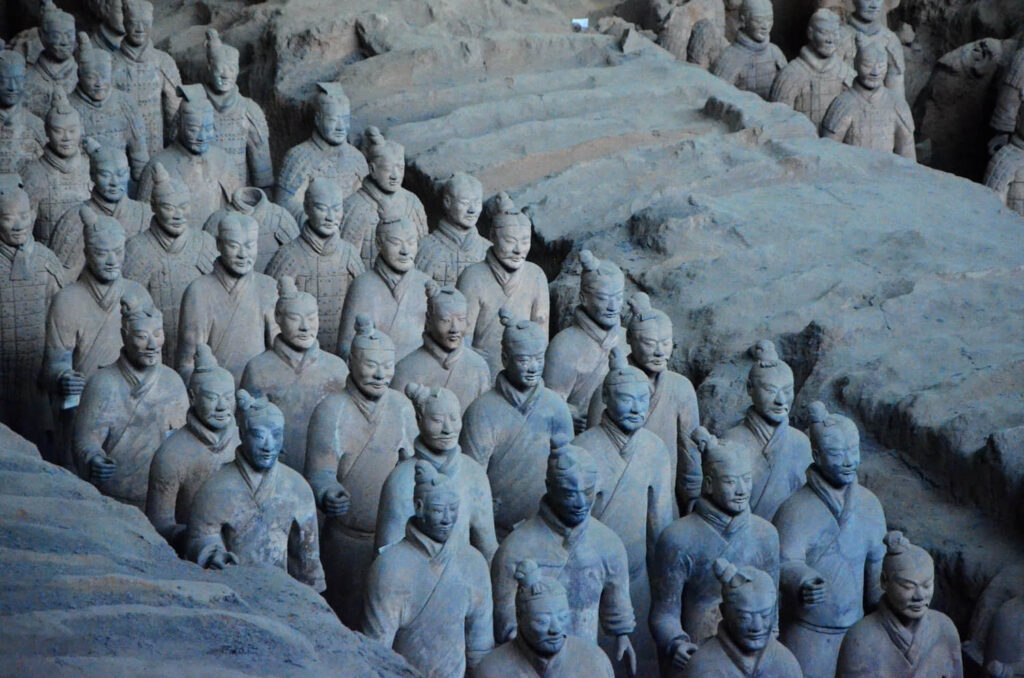
1. The Silk Road’s Multi-Layered History: While famous for its trade in silk, the Silk Road was also a conduit for the exchange of fruits, nuts, and even animals. It’s believed that grapes and walnuts from Central Asia found their way to China via this route, while peaches and pomegranates traveled from China to the West.
2. The Great Wall’s Lesser-Known Companion: Everyone knows about the Great Wall of China, but few are aware of the ‘Great Wall of Gansu’ or the ‘Jade Gate Pass.’ This less famous section of the wall in Gansu Province was a crucial defense point against invasions and a strategic gateway for Silk Road traders.
3. The Desert Oasis Town: Dunhuang, a small oasis town, played a significant role in Silk Road history. It was a crossroads for traders and a melting pot of cultures. Today, it’s home to the Mogao Caves, a UNESCO World Heritage site with spectacular Buddhist art.
4. Marco Polo’s Lesser-Known Counterpart: While Marco Polo is a household name, few know about Zhang Qian, an explorer who is often considered the father of the Silk Road. His journeys helped establish relations between Han China and Central Asian tribes, paving the way for the Silk Road.
5. The Ancient City of Jiaohe: Near the city of Turpan in Xinjiang, the ancient city of Jiaohe remains one of the best-preserved ruins of its kind. Once a bustling city, it now offers a hauntingly beautiful glimpse into the past, with its unique earthen architecture.
6. Karakul Lake – A Photographer’s Dream: Nestled in the Pamir Mountains in Xinjiang, Karakul Lake is known for its stunning scenery and crystal-clear waters, reflecting the surrounding snow-capped mountains. It remains a hidden treasure for many travelers.
7. The Heavenly Lake of Tianshan: This alpine lake in Xinjiang, surrounded by spruce trees and snow-capped peaks, looks like it’s straight out of a fairy tale. It’s a perfect detour for nature lovers and those seeking tranquility.
8. The Ghost City of Fengdu: On the banks of the Yangtze River, the Fengdu Ghost City is a fascinating complex of temples and shrines dedicated to the afterlife and Chinese folklore. It offers a unique perspective on ancient Chinese beliefs and mythology.
These fun facts and hidden gems offer just a glimpse into the endless wonders of the Silk Road. They remind us that history is not just about the grand narratives, but also about the small, often overlooked details that give depth and color to the story of our world.
Conclusion
As our journey along the Silk Road in China comes to a close, it’s evident that this ancient route offers far more than just a travel experience. It is a profound exploration into the rich tapestry of history, culture, and breathtaking landscapes that have shaped not only China but the world at large. From the bustling ancient cities to the serene natural wonders, every mile of the Silk Road tells a story of human endeavor, resilience, and the eternal quest for connection and understanding.
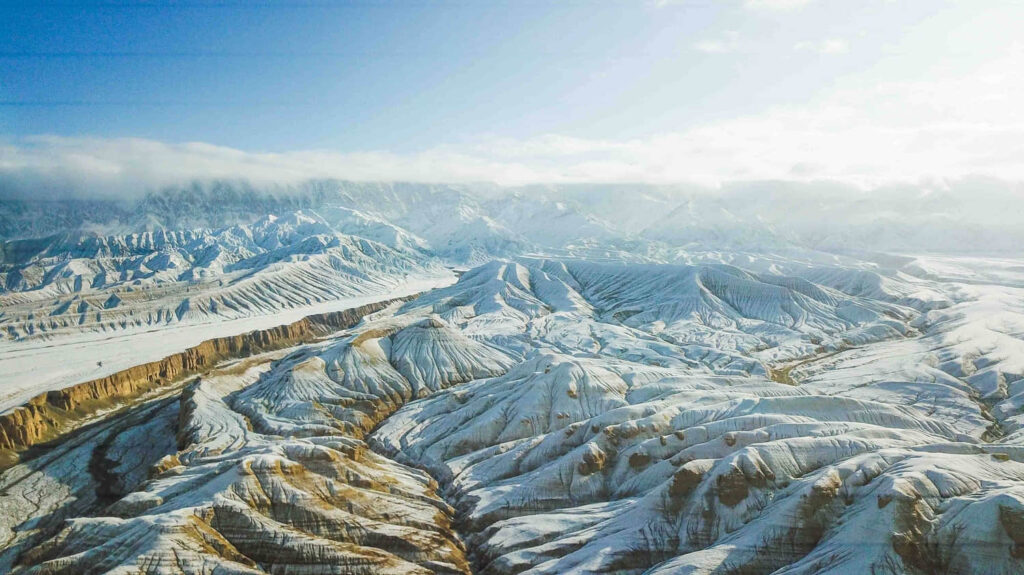
The Silk Road is not merely a destination to tick off a traveler’s list; it’s a journey that challenges and enriches those who traverse it. It’s about standing in the shadows of the Terracotta Warriors, feeling the timeless pulse of history; it’s about traversing the Gobi Desert, where caravans once tread under the relentless sun; and it’s about experiencing the harmonious blend of cultures that have thrived along this legendary route.
For the adventurous spirit, the Silk Road offers an unforgettable experience, blending adventure with enlightenment. It promises a journey that is as much inward as it is outward, leading to personal discoveries and a deeper appreciation for the diversity and complexity of our shared human history.
In essence, a trip along the Silk Road is more than just a journey through China; it’s a voyage across centuries, a trek through the pages of history, and a profound encounter with the myriad cultures that have woven the rich, intricate fabric of this legendary route. It’s an invitation to step out of the familiar and immerse oneself in the extraordinary – an experience that is sure to leave an indelible mark on the heart and mind.
